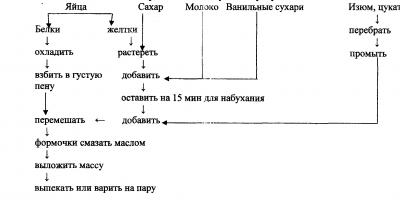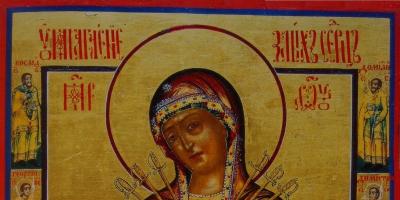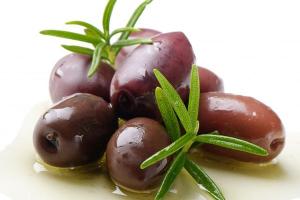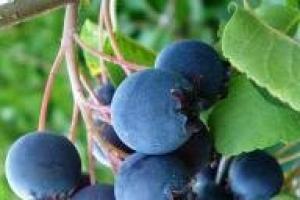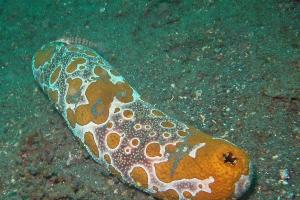Technological diagram for preparing rusk pudding

Technological diagram for preparing fried apples in dough

Technological diagram for preparing charlotte with apples


Quality requirements
Souffle
Appearance- a baked lush porous mass that retains the pattern applied to its surface, and is finely porous at the fracture. The surface is evenly tinted and sprinkled with refined powder.
Color- surface - from golden to light brown, on the cut of vanilla - bright yellow, chocolate and nut - light brown, fruit and berry - from light yellow to golden.
Smell- vanilla soufflé - vanilla; chocolate - chocolate and cocoa powder; nut - caramel and nuts; fruit (berry) - baked protein with the aroma of fruit (berry) puree.
Taste- sweet with a well-defined taste of baked protein and additives.
Consistency- foamy, soft, delicate, slightly elastic.
Puddings, charlotte with apples
Appearance- products that retain their shape well, with a uniformly baked surface without cracks.
Color- from golden to light brown.
Smell- cracker pudding - vanilla. Charlottes with apples - cinnamon.
Taste- sweet with a well-defined taste of rich crackers (cracker pudding), toasted bread and apples (charlotte).
Consistency- soft, slightly elastic, the crust of baked products is crispy.
Apples in dough and puff pastry
Appearance- fried apples in dough - apple circles covered with an even layer of fried dough, sprinkled with refined powder.
Apples in puff pastry are round-shaped products, covered with a layer of baked puff pastry with a golden brown crust, without cracks, sprinkled with refined powder.
Color- surfaces - from golden to light brown, apples - yellowish.
Smell- poached apples, for fried apples in dough - fried dough.
Taste- from sweet and sour to sweet with a flavor characteristic of poached apples and baked (fried) dough.
Consistency- dough - crispy, for puff pastry - flaky, apples - soft, juicy.
Homework
1 Collection of recipes for dishes and culinary products. Mn.: BAK, 1996, p.375-381
2 Kovalev N.I., Kutkina M.N., Kravtsova V.A. Cooking technology. M.: Publishing house "Business Literature", 1999, p.376-379
3 Kovalev N.I., Salnikova L.K. Cooking technology. M.: Economics, 1988, p.241-243
Preparation and serving of tea, coffee
The importance of drinks in nutrition.
Ha 30 -50% replenishes the need for liquid, quenches thirst better and faster than water.
They have a tonic effect, because... they contain caffeine (tea, coffee) and theobromine (cocoa, chocolate).
Sources of vitamins (C, B, PP), minerals.
They have energy value (cocoa, chocolate, milkshakes),
Stimulates appetite (kvass, fruit drinks, juices).
Beverage classification

Independently repeat the following questions from the discipline “Commodity Science of Food Products”:
Tea suppliers;
Tea production;
Nutritional value of tea.
Develop a technological map for preparing pudding
Purpose of the classes: training in the technology of preparing sweet hot dishes, working with regulatory and technological documentation, compliance with yield standards, and deadlines for implementation.
Puddings are made from viscous porridges (rice, semolina) or vanilla crackers. Whipped whites are the basis for all types of puddings. They give the products the necessary pomp and porosity. For these dishes, you need to beat the egg whites especially carefully. To do this, carefully separate the whites from the yolk (in the presence of yolk, the whites do not whip well). The egg whites are cooled and whipped into a thick foam, first slowly, and then the pace of whipping is constantly accelerated. Combine the whites with other products carefully, stirring them from top to bottom so that the whites do not settle.
Task 1. 1) Make a technological map for rusk pudding.
Calculate the amount of ingredients to prepare 35 servings of rusk pudding.
Draw up a technological scheme for preparing rusk pudding.
Technological map No. 917
Rusk pudding
Cooking technology
Egg yolks are ground with sugar, diluted with cold milk; This mixture is poured over vanilla crackers, broken into small pieces, and left for 15 minutes to swell. When the crackers swell, add sorted and washed raisins and candied fruits, and then carefully fold in the whipped whites. After this, the mass is mixed and placed in greased molds and baked in the oven.
The pudding can be steamed. The molds, sprinkled with sugar, are filled 2/3 of the volume with the prepared mass and boiled.
The pudding is topped with apricot sauce and served hot. The pudding can also be served cold with milk or jelly (200 g per serving).
Task 1. 1) Make a technological map for apple pudding with nuts.
2) Calculate the amount of ingredients to prepare 55 servings of apple nut pudding.
3) Make a technological scheme for preparing apple pudding with nuts
Technological map No. 918
Apple pudding with nuts
| Raw materials | Weight for 1 serving | Weight for 55 servings | ||
| Gross | Net | Gross | Net | |
| Apples | ||||
| Milk | ||||
| Eggs | ½ pcs. | |||
| Sugar | ||||
| Peeled almonds | ||||
| Roasted almond mass | - | |||
| Semolina | ||||
| Butter | ||||
| Salt | 0,2 | 0,2 | ||
| Pudding weight | - | |||
| Sauce No. 838 | - | |||
| Exit | - |
Cooking technology
Peeled and roasted almonds with sugar are ground, poured with milk and boiled for 2-3 minutes. Then pour semolina into the milk in a thin stream and bring to a boil again. Into the prepared mixture, cooled to a temperature of 60-70°C, add egg yolks ground with sugar, peeled and diced apples, add salt, stir, then add whipped whites and the resulting mixture is carefully mixed again.
The prepared mixture is laid out in greased molds and steamed.
Apricot sauce is served with the pudding.
Practical lesson No. 14 (4 hours)
Chocolate pudding, the recipe of which is simple, will decorate any table - both festive and everyday.
How to make chocolate pudding?
Puddings, including chocolate puddings, are dishes of English cuisine. Traditionally, puddings are made from eggs, sugar, milk and flour. Fruits, spices, nuts or other fillings are also added to puddings. Chocolate pudding is prepared with the addition of chocolate, often with the addition of rum or cognac, as well as nuts (walnuts, almonds, etc.), vanilla. Eggs, milk, flour or semolina are added to chocolate puddings as binding ingredients.
Chocolate pudding is prepared in a water bath, steamed or baked in the oven. The bain-marie pudding pan should be sprayed with cold water before filling with the pudding mixture. Grease a baking dish with oil, fat and sprinkle with breadcrumbs.
Chocolate Pudding Recipes
Chocolate pudding: a simple recipe.
Ingredients: 3 tbsp. cocoa, 1-2 tbsp. cream, 60g sugar, half a glass of milk, 125g breadcrumbs, 50g butter, 2 eggs, 1 tbsp. cognac, 2 tbsp. grated almonds, tsp. soda, 60g flour.
Preparation: mix cocoa and breadcrumbs, add cream, leave for 10 minutes. Mix the butter with sugar and grind well, add the yolk, soda, flour, then crackers, almonds and cognac. Beat the egg whites and sugar separately and add them to the dough. Place the dough in a mold and place in a steam bath for 1 hour.
Chocolate semolina pudding.
Ingredients: 1 liter of milk, 100 g of semolina, 100 g of sugar, 75 g of milk chocolate, 25 g of butter.
Preparation: boil milk, add sugar, butter, chocolate, broken into pieces, stir until chocolate melts, add semolina, stir and cook for another 2 minutes, remove from heat. Rinse the pudding mold with cold water, pour the pudding into it, and refrigerate for 2 hours.
Chocolate pudding with nuts.
Ingredients: 200g wheat bread, 3 tbsp. butter, 1 cup walnuts, 1 tbsp. cocoa, 8 eggs, 50g dry red wine, 2 tbsp. flour, 2 cups milk, 1 cup sugar, ½ tsp. vanillin; for gravy - 2 tbsp. flour, 1 tbsp. cocoa, half a glass of sugar, 2 glasses of milk, 50g of dry red wine.
Preparation: cut the crusts from the bread, cut the crumb into thin slices, soak in milk. Grind half the sugar with butter, add cocoa, yolks, knead until smooth. Squeeze out the bread crumb, chop it, mix it with the main mass, carefully add the whites beaten with sugar, nuts mixed with flour, wine or rum, and vanillin. Grease the mold with oil, fill it with the mixture, place it in a bowl with hot water, and bake in the oven until done. Prepare the gravy - mix flour, sugar, cocoa, mix with half a glass of cold milk, pour into boiling milk, cool, add wine or rum. Serve pudding with gravy. Confectionery: materials of the sixth International Conference / International Industrial Academy March 19-21, 2007 - M.: Pishcheprom-izdat, 2007.p.98
Vanilla-chocolate pudding with caramel nuts.
Ingredients: 2.5 glasses of milk, 3 tbsp. cocoa, 3 tbsp. flour, 1 cup sugar, vanilla sugar, 50g walnuts, 30g dark chocolate, 1 tbsp. butter.
Preparation: pour 2 glasses of milk into a saucepan, mix half a glass of sugar with flour and vanilla, gradually pour the remaining half of the milk into it, mix well so that there are no lumps, add the mixture to the saucepan with milk, put on fire, heat slowly, stirring constantly . Add 1 tbsp. butter, stir until thickened, divide the mass into two parts - mix one with cocoa. Place the pudding in the bowls, alternating the white layer with the chocolate layer, cover with cling film, and refrigerate for 1 hour. Heat half a glass of sugar in a frying pan, melt the chocolate in a water bath, add nuts to the sugar, stir. Pour the chocolate into a plastic cup and place it in the freezer. Sprinkle the finished pudding with chocolate chips and decorate with caramel nuts.
Chocolate pudding is best served chilled. When serving, you can top it with caramel, garnish with ice cream or sprinkle with coconut.
Department of Education, Science and Youth Policy of the Voronezh Region
STATE EDUCATIONAL BUDGETARY INSTITUTION
SECONDARY VOCATIONAL EDUCATION
VORONEZH REGION
"Rossoshan College of Meat and Dairy Industry"
PUBLIC LESSON
according to the professional module PM. 05
“Organization of the cooking process and preparation of complex
cold and hot desserts"
and discipline general humanitarian and socio-economic cycle
"Foreign language"
topic of the lesson:
"Technology for preparing puddings,
dessert fondue"
Rossosh 2014
Developed by: Potapenko N.Yu. – teacher of special disciplines
Pyshnograeva E.B. – teacher of general education disciplines
Considered at a meeting of the cycle commission of special disciplines
Chairman of the Commission ____________/Ivashchenko O.V./
Considered at a meeting of the cycle commission of foreign languages
Protocol No._____ dated “___”___________ 2014
Chairman of the Commission ____________/Mikhailovskaya O.A./
"By words the mind is winged"
“From words the mind rushes to heights” Aristophanes
annotation
Methodological development of an integrated lesson combining the professional module PM.05 “Organization of the cooking process and preparation of complex cold and hot desserts” and the discipline of the general humanitarian and socio-economic cycle “Foreign language” is intended for conducting a lesson in a group of students studying in the specialty “Technology of social production nutrition" for English language learners. The lesson material meets the requirements of the Federal State Educational Standard for Secondary Vocational Education in the field of mastering types of activities and developing competencies.
Integration is the merging of disparate parts into a whole, deep interpenetration, the merging of generalized knowledge in a particular area into one educational material.
The pedagogical idea of interdisciplinary connections arose and developed under the influence of the processes of integration and differentiation of scientific knowledge. The ideas of interdisciplinary connections and their transition into an independent didactic problem are associated with the theoretical and practical searches of teachers of different eras: Ya.A. Komensky, I.G. Pestalozzi, A. Disterweg, K.D. Ushinsky. They highlighted the problem of interdisciplinary connections as providing a system of students’ knowledge about the world.
The idea of integration has recently become the subject of intensive theoretical and practical research in connection with the processes of differentiation in teaching. Integration gives students the opportunity, on the one hand, to “show the world as a whole”, overcoming the disunity of scientific knowledge in a professional module and discipline of the general humanitarian and socio-economic cycle, and on the other hand, to use the study time freed up due to this for the full implementation of profile differentiation in training.
Every foreign language lesson is a crossroads of cultures, it is the practice of intercultural communication, because every foreign word reflects a foreign world and a foreign culture.
In modern conditions of teaching a foreign language in secondary specialized educational institutions, there is an increasingly urgent need to acquire
The formulation and solution of important general didactic, pedagogical and methodological tasks are melting, with the goal of expanding the general educational horizons of students, instilling in them the desire to master knowledge beyond the compulsory programs.
The profession of catering technologist involves participation in various culinary competitions, including international ones. In 2014, students of the Rossoshan College of Meat and Dairy Industry, catering department, took part in the Regional ChampionshipWorldSkillsRussiato identify the best youth representatives with professional competenciesWSIin the field of blue-collar professions. To become a good specialist and work in modern catering establishments, you need knowledge of English.
In preparation for an integrated lesson on the professional module PM.05 “Organization of the cooking process and preparation of complex cold and hot desserts” and the discipline of the general humanitarian and socio-economic cycle “Foreign Language”, teachers posed questions to themselves, the answers to which were determined first of all planned results:
Development of monologue and dialogic speech, understanding foreign language speech by ear with subsequent extraction of necessary information from the text, training in working with technological maps in English;
Rationalization and intensification of educational
activities;
Increasing the motivation of students’ educational activities due to a non-standard lesson form (it’s unusual, which means it’s interesting);
Advanced training of teachers and development of methodological and didactic tools.
The tasks solved in the integrated lesson include:
Creating an atmosphere of interest and creativity. In the implementation of interdisciplinary connections, when studying a professional module, two blocks of processes can be divided into two blocks: actualization and specification.
Updating involves creating a situation in the lesson where the necessary knowledge is updated in the students’ memory. However, updated knowledge from related sciences does not yet mean realized interdisciplinary connections. It is necessary to concretize updated knowledge on new objects of study of a specific topic in a professional module and related sciences. The level of preparedness of students and the amount of interdisciplinary information are of great importance in choosing one or another methodological technique.
Promoting the active and conscious assimilation of educational material by students, ensuring the continuity of knowledge, its formation at a higher productive level, which is important for the formation of a model of the future catering technologist.
The most vulnerable aspects of an integrated lesson include the following: technology of interaction between two teachers;
the sequence and order of their actions; content and methods of presenting material; the duration of each action.
The content of the lesson includes additional theoretical material that broadens the horizons of students, who during the lesson repeat the main material of the section, develop their communication skills, and perform all types of speech activities based on what they have learned. All tasks are interesting, feasible and correspond to the set goals. A rational combination of methods and techniques makes the lesson lively and not boring, encouraging students to actively learn.
The relevance of the integrated lesson is dictated by new social demands placed on learning. The modern education system is aimed at the formation of a highly educated, intellectually developed personality with a holistic view of the picture of the world, with an understanding of the depth of connections between the phenomena and processes that represent this picture.
Integrated lessons contribute to the formation of a holistic picture of the students’ chosen profession, an understanding of the connections between phenomena, and help them gain the ability to apply knowledge of the discipline of the general humanitarian and socio-economic cycle to the knowledge of the professional module.
TECHNOLOGICAL MAP OF THE CLASS
PM.05 “Organization of the cooking process and preparation of complex cold and hot desserts”
OSGE.03 –"Foreign language"
MDK.05.01 « Technology for preparing complex cold and hot desserts»
Section 3 PM.05 "Cooking complex desserts" “Technology for preparing puddings and dessert fondue”
Place and role of the lesson in the studied section of the MDK: combined lesson.Repetition, generalization and systematization of the material covered. Learning new material.
Lesson objectives: educational:
Acquiring competencies in the field of preparing complex hot desserts: puddings, chocolate and fruit fondue (PC 5.2);
Develop competence in educational activities, training in working with a map in English;
Identification of the level of skills in using the studied English vocabulary in oral speech;
Generalization, deepening and systematization of knowledge of the technology of preparing complex cold desserts (PC 5.1).
developing :
Development of skills to organize one’s own activities;
Developing student experience to the fullest extent possible;
Formation of skills to respond in an emotionally tense environment;
Development and activation of logical thinking, attention, ability to make comparisons, generalize knowledge;
Development of experience in search, research and creative activities;
Search and use available information necessary to effectively solve professional problems;
Development of correct literary speech;
Development of foreign language competence and its components (speech, language, socio-cultural, cognitive;
Development of speaking skills, mastery of new language forms on the relevant topic;
Development of translation skills;
Development of monologue speech skills.
educational:
Increasing motivation for learning a foreign language. Formation of communicative competence, the ability to work in groups and individually, to help each other, developing the ability to listen to foreign language speech by ear and extract the necessary information from it.
Nurturing the motives of work (to achieve high results in work, experiencing the beauty of work);
Formation of love for the profession and professional dignity;
Fostering a sense of personal responsibility for the results of one’s work;
Fostering a sense of collectivism;
Forming an awareness of the importance of the discipline being studied for the preparation of a competent technologist;
Cultivating responsibility, observation, attention, memory, broadening one’s horizons;
Formation of students' orientation towards a high level of general educational and professional training;
Expanding your linguistic horizons;
Fostering respect for the traditions and culture of other peoples;
Formation of scientific and cultural competence.
formation of elements of general competencies:
– OK 1. Understand the essence and social significance of your future profession, show sustained interest in it;
– OK 2. Organize your own activities, choose standard methods and ways of performing professional tasks;
– OK 3. Make decisions in standard and non-standard situations and bear responsibility for them;
- OK 4. Search and use information necessary for the effective performance of professional tasks, professional and personal development.
- OK 5. Use information and communication technologies in professional activities;
- OK 6 . Work in a team and team, communicate effectively with colleagues and management;
– OK 8.
– OK 9. To navigate the conditions of frequent changes in technology in professional activities.
Form of organization : frontal, individual.
Teaching methods used:
- verbal: heuristic conversation,step-by-step presentation;
- visual: organizing students’ independent work in preparation for classes, which consists of creating presentations;
- practical: working with a workbook,use of ICT tools in preparing and conducting training sessions;
- reflexive: current reflection, final reflection.
Methodical techniques: updating of basic knowledge - frontal written survey, oral survey, advanced tasks, search, research and creative work, formulation of problematic tasks, use of ICT during the survey, presentation of new material, to illustrate methods and techniques of work.
Principles:
Communication orientation;
Individual and differentiated approach;
Activity-based approach to learning;
Strength of assimilation of knowledge, skills,
Visibility, accessibility and feasibility.
Evaluation of work results:
1 point (correct answer to a theoretical question) - the accuracy of the answer is assessed.
Students who prepare an advanced task receive an additional 3 points.
1 point - completing a test task
(correct answer to the theoretical question).
Active participation in the lesson is awarded an additional 3 points.
Students who score 51 points or higher during the lesson receive a grade of “5”, 45 - 50 points - “4”, 37 - 44 points - “3”.
Planned results:
Formation of professional competence in the field of preparing complex hot desserts;
Formation of translation skills;
Competencies of independent and search-research work;
Effective communication;
Awareness of the importance of studying the professional module
PM.05 “Organization of the cooking process and preparation of complex cold and hot desserts”;
Development of communicative competence.
Interdisciplinary connections: OP 2 “Physiology of nutrition”, OP 4 “Information technologies in professional activities”, OP 8 “Occupational safety”, OP 13 “Processes that shape the quality of culinary and confectionery products.”
Intrasubject connections: topics “Cooking complex cold desserts”, “Assortment of complex hot desserts. Methods for preparing complex hot desserts”, “Sauces for hot desserts. Features and options for design and decoration of hot desserts”, “Technology for preparing soufflé”, “Dishes of national cuisine”.
Comprehensive methodological support: multimedia complex - computer, projector, screen; multimedia presentation materials; tests.
Educational planning documentation: requirements of the Federal State Standard for the content and level of training of graduates in the specialty 260807 “Technology of public catering products”, work program of the professional module PM.05, work programdiscipline of the general humanitarian and socio-economic cycle “Foreign Language”,curriculum of the State Budgetary Institution of Secondary Professional Education "RKMMP", calendar-thematic plans for the professional module anddiscipline of general humanitarian and socio-economic cycle.
Location: conference room (room 7)
METHODOLOGICAL CARD OF THE LESSON
p/p
Lesson stage
Time, min
1
Organizational stage
Organization of the start of the lesson. Working with the magazine. The emotional mood of the group.Assessing audience readiness.Announcement of the topic, target setting for the lesson.
5
2
Main stage
75
Warm-up “Culinary polymath” (repetition, generalization and systematization of the studied material).
Motivation to work (acquiring new knowledge).
Studying new material necessary to develop skills
1. Characteristics of varieties of puddings.
2. A little about the history of puddings.
3. Pudding preparation technology.
4. Features of preparing dessert fondues.
5. Technology for preparing sweet fondue.
33
15
3
The final stage
10
Evaluation of students' work in class.Tasting of prepared desserts
Homework.

Table 1 During the classes
sl. 2.Teacher PM.05:
We will teach an extraordinary lesson today. It will be taught by two teachers at once. Teacher of the professional module “Organization of the cooking process and preparation of complex cold and hot desserts” and teacher of the discipline “Foreign language”.
Teacher in. language:
Combining the material of the professional module and the English language within one lesson will help to generalize, consolidate and acquire new knowledge in two disciplines at once.
Teacher PM.05:
The topic of the lesson is “Technology for preparing puddings and dessert fondue.” Teacher in. language:
Lesson objectives:
Summarize and systematize knowledge of the technology for preparing complex cold desserts, repeat culinary terms in English.
Characteristics of varieties of puddings;
The history of puddings;
Technology for preparing puddings;
Features of dessert fondues;
Technology for preparing sweet fondue Sl.3.
Teacher PM.05:
We continue to study the section of the interdisciplinary course “Technology for preparing complex cold and hot desserts”, and therefore we need to test the theoretical knowledge of the studied professional competencies of PC 5.1. “Organize and carry out the preparation of complex cold desserts” and PC 5.2. "Organize
Teachers are greeted.
Write down the topic of the lesson in your notebook
OK 6. Cultivating tolerance. Effective communication with colleagues and teachers
Continuation of Table 1
Teacher in. language:
As well as knowledge of culinary terminology, dishes of national cuisines in English.
2 Main stage
2.1 Carrying out the “Culinary erudite” warm-up. Generalization and systematization of the studied material
Teacher in. language:
We will conduct a “Culinary Erudite” warm-up, then everyone will independently test their knowledge and give themselves 1 point for the correct answer, and calculate the sum. The most active participants and students who prepared an advanced task will receive additional points - sl. 6-17.
Answer the questions in writing, then check the answers.
Repeat culinary terms in English and complete a test task. The total number of points is calculated.
PC 5.1. “Organize and carry out the preparation of complex cold desserts” and PC 5.2. “Organize and carry out the preparation of complex hot desserts.”
OK 3. Make decisions in standard and non-standard situations and take responsibility for them.
2.2 Motivation to carry out work (acquisition of new knowledge)
Teacher in. language:
- “By words the mind is winged”
Teacher PM.05:
- “From words the mind rushes to heights.” So said the philosopher Aristophanes.
Teacher in. language:
Our lesson is especially true to these words. To become a good specialist and work in a modern enterprise
Continuation of Table 1
Teacher PM.05:
The acquired knowledge is necessary to complete the laboratory work “Preparation of souffles, snowballs, puddings. Organoleptic quality assessment" and expanding professional horizons - sl. 18.
Teacher in. language:
Lesson questions.
1. Characteristics of varieties of puddings.
2. The history of puddings.
3. Pudding preparation technology.
4. Features of dessert fondues.
5. Technology for preparing sweet fondue - sl. 19.
Write down class questions in a notebook
2.3 Learning new material necessary to develop skills- sl. 20.
Question 1. Characteristics of varieties of puddings
Teacher PM.05:
Pudding is a traditional English dessert made from eggs, sugar, milk and flour, cooked in a water bath. Cold and hot puddings come in many varieties, from fluffy desserts to hearty, filling dishes. Puddings made from semolina and other starch-containing ingredients are nutritious, contain a large number of calories, and have high nutritional value - sl. 21.
There are several varieties of puddings.
Steam puddings are most often prepared on the basis of cottage cheese; they are characterized by a low fat content. The homogeneous heat of the steam diffuses slowly through the prepared mass, resulting in the pudding cooking in its own juices, which minimizes the loss of nutrients and preserves its texture and taste - sl. 22.
Pudding soufflé. It contains less protein than soufflé, so it is less light. During the cooking process, such a pudding practically does not increase in volume, like a soufflé, but does not fall off either. Their heat treatment must be carried out in Bain Marie on the stove or in the oven - sl. 23.
Flamery - pudding made from semolina porridge, boiled in a mixture of water and wine, fruit juice - sl. 24.
Taking notes on the lecture.
OK 4. Search and use information necessary for the effective performance of professional tasks, professional and personal development.
Continuation of Table 1
Answer the question:
The pudding contains the following components: wheat flour, eggs, sugar, cottage cheese, cereals (semolina, rice), fruits, berries, candied fruits, cocoa powder, nuts, vanillin, zest .
There are steam puddings,
soufflé puddings, flamerie - sl. 26.
Question 2. History of puddings
Teacher in. language:
As mentioned, pudding is associated with English cuisine and the celebration of Christmas. Listen to the history of pudding and the traditions associated with this dish, and then answer the questions - sl. 27.
The first student tells the history of puddings in English:
Pudding is a classical English dessert usually associated with Christmas. The word pudding had its origin from French word boudin which means “little sausage” -sl. 28-29. It proves that pudding wasn`t a dessert in ancient times but a meat dish. The pudding`s origin as a dish traced back to the1420 thto two sources. It emerged as a way of preserving meat at the end of the season. Because of the shortages of fodder, all surplus livestock were slaughtered in autumn. The meat was kept in a pastry case with-sl. 30 .
OK 4. Search and use information necessary for the effective performance of professional tasks, professional and personal development.
OK 5. Use information and communication technologies in professional activities;
OK 8. Independently determine the tasks of professional and personal development, engage in self-education, and consciously plan professional development.
Continuation of Table 1
dried fruits (usually plums or raisins) acting as preservative-sl. 31 . As techniques for meat preserving improved in the 18 th century the savory element of both the mince pie and the plum pottage diminished as the sweet content increased-sl. 32 .The second student briefly voices the information in Russian:
Pudding is a classic English delicacy, especially
At Christmas. The word pudding comes from the French boudin, which means “small sausage” and proves that in ancient times pudding was not a dessert at all and included meat.
The British have several versions regarding the origin of pudding. According to one, pudding was originally called thick oatmeal cooked in meat broth. Bread crumbs were added to the porridge, nuts, honey, prunes. This was the pudding in the 16th century. According to the second version, pudding arose as a method of preserving meat, which was stored in a cool place along with
Continuation of Table 1
sl. 33.The third student talks about the tradition of making Christmas pudding in English:
Christmas pudding is a type of pudding traditionally served on Christmas Day (December 25 th ) as part of the Christmas dinner. It has its origin in medieval England and is known as plum pudding or Christmas Pudding. -sl. 34-35. Despite the name “plum pudding”, the pudding contains no actual plums but raisins. It is composed of many dried fruits held together by egg and suet and flavored with cinnamon, nutmeg, cloves, ginger and other spices-sl. 36 . The pudding is aged for a month or even a year, the high alcohol content of the pudding prevents it from spoiling during these times-sl. 37 . Christmas puddings were boiled in a pudding cloth and often dried out on hooks for weeks.
There is a popular myth that “pudding should be made on the 25th th Sunday after Trinity, that it be prepared with 13 ingredients represent Christ and 12 apostles, that every member of the family stir it in turn from east to west to honor the Magi and their supposed journey in that direction-sl. 38 .
The fourth student talks about the traditions of Christmas pudding in Russian:
Christmas pudding - a fragrant, sweet and filling dessert, decorated with holly one of the national symbols of Great Britain, without which the British (as well as the Irish, Canadians and Australians) cannot imagine Christmas dinner... - sl. 40-41.
According to tradition, Christmas pudding began to be prepared on the 25th Sunday after Trinity Sunday. It consisted of 13 ingredients representing Jesus Christ and the 12 apostles. Each family member participated in the shuffling, always from east to west in honor of the wise men who visited the baby Jesus. A button was placed in the pudding batter
(meant a bachelor life),
Continuation of Table 1
Teacher in. language:
You listened to information about the history and tradition of making Christmas pudding in Great Britain, and now answer the questions:
1. When did British people begin to cook pudding for Christmas?
2. What is it composed of?
3. How much time is the pudding aged?
4. What prevents pudding from spoiling?
5. When should pudding be made on according to a tradition?
6. What object founded in pudding gave its owner good luck and richness?
ring (for a wedding), a thimble (for unmarried life), a sixpence coin, which promised good luck and wealth - sl. 42.
Answer questions:
British people began to cook pudding in middle ages.
It was composed of 13 ingredients.
Pudding was aged for a month or even a year.
Alkohol prevents pudding from spoiling.
According to the tradition pudding should be made on 25 th Sunday after Trinity.
Six pence coin.
Question 3. Technology for preparing English Christmas pudding
Teacher PM.05:
Currently, there are more than a thousand pudding recipes. English Christmas pudding - a symbol of unity and power
PC 5.2. Organize and prepare complex hot desserts.
Continuation of Table 1
- verse 43. The screen in front of you shows the recipe and technology of the classic English Christmas pudding - words 44-53.In a bowl, mix flour, bread crumbs, butter, grated ginger, ground allspice, cinnamon, and salt.
Add eggs, raisins, peeled almonds, candied fruits, dark beer, cognac. Mix thoroughly.
Maintain at a temperature of 6 °C for 3 hours.
The prepared mass is placed in a mold greased with butter, wrapped in film and lowered into a bowl of boiling water using a hook.
Heat treatment is carried out at low boiling water for 6 hours.
The finished pudding is left to mature for 72 hours at a temperature of 6 °C.
Before serving, the pudding is heated again in a water bath for
2 hours - words 48-53.
Please think about what requirements the prepared pudding must meet - word 54?
Teacher in. language:
Now watch the presentation of another method of preparing Christmas pudding, so that at home you can create a technological map for preparing pudding in English.
Answer the question:
The pudding should have a golden brown crust, be fluffy, and well baked. The shape of the pudding corresponds to the shape of the container used. The consistency is delicate, soft. The color is dark brown. Taste sweet - words 55.
Watching the presentation “Christmas pudding” - sl.56-62.
OK 9. Navigate in the face of frequent changes in technology in professional activities
OK 8. Independently determine the tasks of professional and personal development, engage in self-education, consciously plan professional development.
Continuation of Table 1
Teacher PM.05:Fondue is a Swiss dish that is prepared over an open fire in a special ceramic container. Translated from French, “fondue” means “molten.” The name “fondue” itself comes from the French fondre, which means “to melt.” - word 63. Chocolate fondue – heated chocolate sauce, into which various products are dipped, strung on a skewer to give them an exquisite taste with a chocolate tint: sponge cake, buns, waffles, cookies, fruits and berries.
The basis of the dessert is chocolate. It can be bitter, white or milky. You can add cream, condensed milk to the melted chocolate, and liqueur, brandy, cognac to add a refined aroma. - next 64.
In order to prepare chocolate fondue, you need a special device - a fondue maker. It is a bowl on legs, under which there is a place for a burner. This is necessary so that the chocolate sauce is constantly heated and does not cool down. - sl.65-67.
Think about what other products are suitable for fondue.
Take notes on the lecture in a notebook.
Answer the question:
Marmalade, marshmallows, marshmallows, meringues.
PC 5.2. Organize and carry out the preparation of complex flour confectionery products and holiday cakes.
OK 9. Navigate in the face of frequent changes in technology in professional activities
Question 5. Technology for preparing sweet fondue.
Teacher in. language:
But fondue can be not only chocolate, but also caramel.
Our students prepared interesting messages about preparing different types of fondue. Your task is to write down the ingredients of the dessert, as well as the sequence of technological operations - next 69.
Student's first creative performance
Second creative performance of the student (presentation in English)
Listen and take notes on the information.
PC 5.2. “Organize and carry out the preparation of complex hot desserts.”
OK 5. Use information and communication technologies in professional activities.
Continuation of Table 1
Teacher in. language:Watch a movie in English to consolidate your knowledge.
Watching the movie “Chocolate fondue” - next 69.
OK 6. Work in a team and team, communicate effectively with colleagues and management;
OK 8. Independently determine the tasks of professional and personal development, engage in self-education, and consciously plan professional development.
2.4 Checking understanding, consolidating knowledge- level 70.
Teacher PM.05:
So, today we remembered the topics we studied and got acquainted with new material. Now let's test our knowledge. You are asked to complete assignments in writing.
Teacher in. language:
Check your answers.
Completing the task - next . 71-77.
(Appendix 3)
Self-test – sl. 79-80
OK 4. Search and use information necessary for the effective performance of professional tasks, professional and personal development.
3. Final stage
3.1 Evaluation of student work in class– sl. 81
Teacher in. language:
Let's summarize the lesson. Calculate your points and give them a rating.
Teacher PM.05:
Today in class you received the following marks. ( Voices marks)
And now we will treat our guests to desserts that our girls prepared according to the recipes they created.
They count the points scored and give self-evaluation of their work - sl. 82
OK 1. Understand the essence and social significance of your future profession, show sustained interest in it.
Continuation of Table 1
3.2 Homework.Definition and characteristics of the stages of students’ independent workTeacher PM.05:
Prepare for laboratory work “Preparation of puddings, soufflés, snowballs. Organoleptic quality assessment". Develop a recipe for the selected dessert, draw up a technological map according to the Collection of Recipes or a technical and technological map for a new dessert recipe.
Make a presentation “Options for decorating puddings.”
OI 3 (Kovalev, Kutkina, Kravtsova “Cooking Technology” pp. 376-377);
OI 6 (Dolgopolova S.V. “New culinary technologies”)
pp. 259-261;
OI 7 (The newest collection of recipes for dishes and culinary products for catering establishments) pp. 334-335.
Teacher in. language:
Make a technological map of the selected pudding in English.
OI 2 Shcherbakova N.I. English for catering specialists - M, “Akademkniga”, 2005
Write down homework - sl. 83
OK 1. Understand the essence and social significance of your future profession, show sustained interest in it.
Teacher in. language:
I would like to end our lesson with the words of the French writer and gourmet Anthelme Brillat-Savary, which he said back in 1795: “The discovery of a new dish does more for human happiness than the discovery of a new star.”
Teacher PM.05:
- “The invention of a new dish does more for human happiness than the discovery of a new star.” Create, invent, try! – sl. 84.
Bibliography
1. Alekseev V.E. Organization of technical creativity of students M. 2004. - 278 p.
2. Andreev V.I. Pedagogy of creative self-development. - Kazan, 1998 - 318 p.
3. Babansky Yu.K. Pedagogy M, Education, 2004. - 337 p.
4. Baranov S.P. Principles of learning. M, 2005. - 441 p.
5. Makhmutov M.I. Modern lesson. Questions of theory - M, 2002. - p. 40.
6. Khatuntseva L.I. Modern lesson in a vocational school: from design to analysis. – VOIPk and PRO
Voronezh, 2007- 180 p.
Pudding is an English dessert made from eggs, sugar, milk and flour, cooked in a water bath. Fruits or spices are added to the pudding. The pudding is cooled in a special form, although this is not necessary. Usually served chilled.
What is pudding

Pudding is a rather unusual dish at first glance. At first, puddings were made only from leftovers, scraps of other dishes and, as it were, fused together. Thus, the technology for preparing puddings involves ready-made raw materials that can be mixed with various ingredients, quickly heated and eaten. Puddings are always based on boiled rice and white bread, and the fillings are butter, fat or various meat or fruit ingredients. The binding filling for puddings is usually an egg in combination with milk or small amounts of alcohol - rum, cognac, which accelerate not only the fermentation of the products included in the pudding, but also play the role of “cleaning” various, especially meat, trimmings.
General rules

General Note
. Puddings are prepared in different ways. Some are boiled in a napkin, others are steamed in a mold, and others are baked in the oven. Puddings also include charlottes, soufflés and airy pies.
Sweet puddings are served, in 3 courses, for the last course, and meat, fish and vegetable puddings can be served for the 2nd course.
General rules.
1.
When preparing puddings, you need to pay special attention to the fact that the mass from which the pudding is made is stirred and beaten with a spatula until it becomes smooth and bubbles appear on it. Then add the beaten whites.
2. Use the freshest eggs in puddings.
3. It is better to grind the yolks first with sugar until white in a warm place.
4. Keep and beat the whites in a cold place. They must be beaten just before use, preferably with a tin spiral beater or a wooden fork. Start knocking down slowly, and in the end it gets faster and faster. As soon as the whites rise into a thick layer, immediately stir them carefully, from top to bottom, with the prepared mass and immediately place them in a hot oven or steam them.
5 . If the pudding is made from a loaf, then, after cutting off the crust and cutting the crumb into pieces, pour boiling milk over it, cover, let stand for 1/4 hour so that the loaf swells, then grind it until smooth.
6. The flour must be of the best quality and dry.
7. The butter should be the freshest, table or butter, soft, but not melted.
8
. In addition to butter, eggs and flour, raisins, currants, sweet almonds - dried, toasted and crushed, bitter almonds, candied orange peel, vanilla, lemon zest, lemon oil, cloves, cinnamon, nutmeg, cardamom, saffron are added to the pudding for taste. But you shouldn’t put a lot of these spices, because... they can drown out the natural taste of the food. It is best to prepare them in sugar, namely: mix lemon zest, vanilla, and cardamom with a large amount of sugar and store in closed tin cans. Sift before use.
9
. If there is no prepared sugar with spices, then in the pudding for 6 people put 5 grains of peeled and crushed cardamom or 1/2 inch of vanilla crushed with sugar, or 1/2 teaspoon of crushed cinnamon, or lemon zest from 1/2 lemon grated, or 7-4 drops of lemon oil, or 10 pieces of bitter almonds.
10 . Candied orange peel should be cut into thin slices - strips or cubes - and moistened with rum to prevent sticking.
Bananovo - date pudding

150 g pancake flour 1 tsp. baking powder 130 g butter 2 large eggs 1 banana 150 g dates
50 g shelled walnuts For the sauce:
200 g white chocolate 100 ml cream 9% fat vegetable oil for greasing molds
Cooking time:
45 min.
Servings: 8
1 serving: 450.7 kcal,
proteins - 6.8 g, fats - 27.4 g, carbohydrates - 44.2 g
1
Sift flour into a bowl, mix with baking powder.
2
Cut the dates in half, remove the pits and finely chop the pulp. Coarsely chop the nuts with a knife. Peel the banana and mash it into a puree with a pestle.
3
Heat the butter to room temperature, add it to the flour mixture and stir. Add sugar, eggs, chopped dates, nuts and mashed bananas. Stir until smooth.
4
Preheat the oven to 180°C. Grease 8 small pudding cups with vegetable oil. Divide the dough into the molds, place them on a wire rack and bake for 20-25 minutes. Let cool in the molds.
5
Prepare chocolate sauce.
6
Pour the cream into a small saucepan. Break the chocolate into pieces and add to the cream. Heat over very low heat, stirring constantly, until the chocolate is completely melted. Invert cooled pudding onto serving plates; remove the molds. Drizzle chocolate sauce over pudding.
When serving, you can garnish the pudding with fresh berries, such as strawberries or canned fruit.
Jalebi Pudding
1 video
Pudding with strawberries and apricots

Required Products:
strawberries - 250 g
apricots - 250 g
lemon zest - 1 piece
sugar for pudding - 50 g and for cream - 3 tbsp. spoons
red currant juice - 130 ml
starch - 2 tbsp. spoons
milk - 400 ml
vanilla sugar - 1 teaspoon
gelatin - 8 g
egg yolk - 4 pcs.
high fat cream - 200 ml
grilled meat - 50 g
lemon balm - 1 sprig
feijoa or grapes for decoration
Recipe preparation method:
To make the pudding, cut the strawberries in half. Remove pits and skin from apricots and cut the pulp into slices. Pour 80 ml of red currant juice over the fruit, add zest, sugar and boil. Mix the starch with the remaining juice and add it to the fruit in a thin stream, stirring constantly. Boil and cool. Remove the zest.
English pudding

We will need:
butter - 2 tbsp. spoons
eggs - 4 pcs.
sugar - 3/4 cup
almonds - 140 g
candied fruits - 1 tbsp. spoon
chopped fruit from jam - 2 tbsp. spoons
cookies - 100 g
cognac - 1 glass
refined sugar - 4 pieces
alcohol - 1 teaspoon
margarine - 1 teaspoon
Roast beef with Yorkshire pudding and gravy sauce
Serves 4-6
1.2 kg beef (from the back); 1 tbsp. flour; 2/3 tbsp. milk; 2 eggs; 1 tbsp. strong beef broth; 2 tbsp. l. vegetable oil; beef fat; 1 tbsp. l. honey; salt, black pepper
Pepper the meat, coat with oil, fry in a frying pan over high heat on all sides, place on a wire rack with a tray, cover with slices of bacon, cook in the oven at 220C for 20 minutes, then another 20 minutes at 170C (basting every 5-10 minutes). meat secreted by juice). Meanwhile, prepare the dough for Yorkshire puddings: beat 2 eggs into the sifted flour, add salt, and whisk in half and half the milk and water.
Bread pudding with berries
Copy of post from LiveJournal website
Entry tags: desserts, breakfasts Bread pudding with berries
This pudding or casserole can be served for breakfast or dessert. The pudding is very easy to make and a good way to use up less-than-fresh bread. The loaf can be soaked in the evening and baked in the morning for breakfast.

for 2 servings
measured proportions
100 g thick bread (I use yesterday's baguette)
2 eggs
1/2 cup milk or cream
2-3 tbsp. l. Sahara
200-250 g berries (DO NOT defrost frozen berries. I usually use frozen mixture - raspberries, blueberries, strawberries, blackberries)
Cut the bun into cubes. In a bowl, mix eggs, sugar and milk. Place the bun into the egg mixture and stir well. Cover with cling film and refrigerate for 30 minutes to 1 hour or until the loaf has absorbed all the liquid.
Preheat oven to 450F (230C).

Grease the molds with butter and sprinkle with breadcrumbs. Add berries to bread mixture. Stir well and pour the mixture into molds, compacting tightly. Sprinkle the top with sugar.

